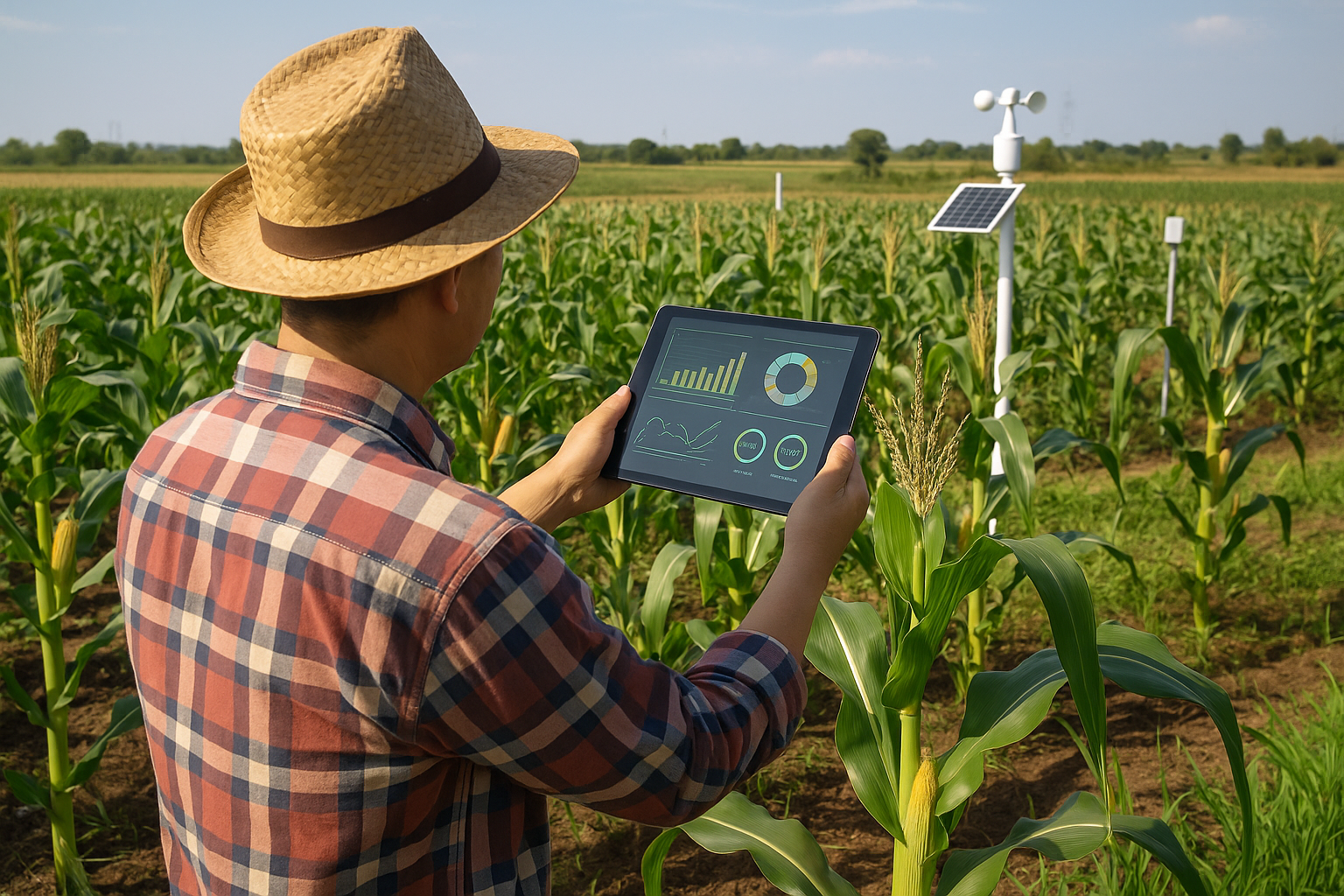Global pressures and local demands fuel digital shift in agri-food supply chains
The study highlights that while the digital push is largely motivated by efficiency, its real test lies in whether it can deliver resilience. Recent disruptions, from pandemics to climate-driven crop failures, have exposed the fragility of traditional supply chains, making the case for a more connected and data-driven approach.

A new study published in Applied Sciences argues that the future of global agricultural supply chains hinges on strategic digital transformation. The research maps out how technology, governance, and sustainability interact to reshape the farm-to-market journey and highlights why collaboration across all stakeholders is critical to making progress.
Titled “Digital Transformation Drivers, Technologies, and Pathways in Agricultural Product Supply Chains: A Comprehensive Literature Review”, the paper reviews 253 studies to identify the forces driving change and proposes a structured Technology-Collaboration-Sustainability (TCS) framework to guide development.
Drivers of change in agricultural supply chains
The review points to a convergence of external pressures and internal demands that are accelerating digital adoption. Climate change, rising global populations, and the persistent challenge of food loss and waste are pushing policymakers and supply chain actors toward more transparent and efficient systems. Meanwhile, farmers, processors, and retailers seek to reduce costs, improve quality control, and meet growing consumer demands for traceability and sustainability.
The authors emphasize that these drivers are not uniform across the globe. Developing countries tend to prioritize basic efficiency gains and resource access, while advanced economies focus on integrating sophisticated digital platforms for real-time decision-making and market responsiveness. This divergence, they argue, underscores the need for context-sensitive strategies that recognize different levels of digital readiness.
The study highlights that while the digital push is largely motivated by efficiency, its real test lies in whether it can deliver resilience. Recent disruptions, from pandemics to climate-driven crop failures, have exposed the fragility of traditional supply chains, making the case for a more connected and data-driven approach.
Technologies enabling the transition
The paper divides digital tools into three tiers: perception, transmission, and application. Perception technologies such as sensors and drones capture data on crops, weather, and logistics conditions. Transmission layers, powered by the Internet of Things (IoT), 5G networks, and cloud services, ensure that data flows seamlessly across the chain. Application technologies like artificial intelligence (AI), machine learning, and blockchain then convert this data into insights that drive forecasting, traceability, quality assurance, and transaction security.
The review stresses that no single technology can deliver the needed transformation in isolation. Instead, these tools create value when integrated within platforms that link farmers to buyers, financiers, and regulators. For instance, blockchain can ensure product provenance and food safety, but its impact depends on reliable data inputs from IoT devices and predictive analytics from AI models.
Despite notable progress in pilot projects, the authors caution that evidence of widespread, scalable success remains limited. They identify gaps in large-scale field validation, integration of disparate systems, and clear cost–benefit analyses for smallholder farmers. These gaps, they argue, must be addressed to ensure that digitalization benefits both productivity and sustainability without leaving vulnerable stakeholders behind.
Building sustainable pathways through collaboration
The team argues that technological advancement alone will not guarantee sustainable outcomes. Collaboration among governments, agribusinesses, cooperatives, and consumers is essential to translate digital capabilities into tangible social, environmental, and economic benefits.
The TCS framework proposed in the study outlines how technological innovation must be embedded in governance structures that foster trust, equitable resource sharing, and inclusive participation. Effective contracts, transparent data policies, and mechanisms to prevent market dominance by a few large platforms are identified as critical conditions for success.
The authors note that governments play a decisive role in setting standards and offering incentives, while producer organizations and cooperatives are crucial for improving the bargaining power of smallholders. They also call for tailored training and capacity-building initiatives to ensure that farmers, especially in less developed regions, can access and effectively use new tools.
A sustainability pathway is presented that integrates technology adoption with governance reforms, aiming to achieve better environmental performance, higher farmer incomes, and more resilient food systems. The authors stress that this pathway requires ongoing evaluation and iterative improvement rather than one-off interventions.
Research gaps and future directions
While synthesizing more than two decades of scholarship, the study acknowledges the limitations of existing literature. Much of the evidence comes from case studies or short-term analyses, making it difficult to assess long-term impacts. The authors recommend expanding quantitative and longitudinal research to test the assumptions behind the TCS framework.
Future work should examine cost–benefit ratios for smallholders, explore ways to strengthen farmer-led platforms, and evaluate how short food supply chains can be digitally supported to enhance local resilience. They also advocate for the use of advanced analytical methods, such as structural equation modeling and case-based reasoning, to better understand the links between technology adoption, collaboration, and sustainability outcomes.
- READ MORE ON:
- Digital transformation in agriculture
- Agricultural supply chain innovation
- Sustainable agricultural supply chains
- AI in agriculture
- IoT in agri-food supply chains
- Agri-tech for smallholder farmers
- Future of digital farming
- Global food security and digitalization
- Governance in agricultural supply chains
- FIRST PUBLISHED IN:
- Devdiscourse










